Blockchains like Ethereum, Polygon, BNB Smart Chain (BSC), etc., are essentially decentralized platforms functioning as distributed ledgers or databases. These networks are renowned for their robust security, transparency, and decentralization, which offer many significant advantages. However, they bring one fundamental flaw for developers – the data stored on these networks isn’t inherently searchable. This makes the process of querying on-chain data a tedious and time-consuming task. Fortunately, this is where blockchain data indexing enters the equation. But what exactly is blockchain data indexing? If you’d like to learn more about this topic, join us in this article as we explore what it means to index blockchain data and introduce the tools you need to build a blockchain indexer!
Overview
In today’s article, we’ll kick things off by diving into the intricacies of blockchain data indexing. In doing so, we’ll explore what it is, why we need it, and how it works. From there, we’ll then cover some common challenges Web3 developers encounter when trying to index blockchain data. Next, we’ll introduce you to blockchain indexers, which are tools specializing in fetching, organizing, and formatting on-chain data. Lastly, to top things off, we’ll introduce you to Moralis – the ultimate platform for anyone looking to build a blockchain indexer or any other Web3 platform!
Moralis is an industry-leading Web3 API provider, allowing you to seamlessly query already indexed blockchain data with only single lines of code. Consequently, when working with Moralis, you don’t have to bother with the process of indexing blockchain data yourself. In turn, you’ll be able to build Web3 projects like your own blockchain indexer, NFT marketplace, decentralized exchange (DEX), or any other platform without breaking a sweat.

Also, did you know that you can sign up with Moralis for free? As such, create a Moralis account today, and you’ll gain instant access to all our premier Web3 APIs!
Nevertheless, without further ado, let’s dive into the intricacies of blockchain data indexing!
Indexing Blockchain Data
Blockchain data indexing is the process of organizing, structuring, and formatting data stored on networks like Ethereum, BNB Smart Chain (BSC), Polygon, etc., with the intent of enhancing the accessibility and searchability of the information. This streamlines data retrieval processes, making it easier for users and decentralized applications (dapps) to explore transactions, track assets, perform data analysis, and much more!
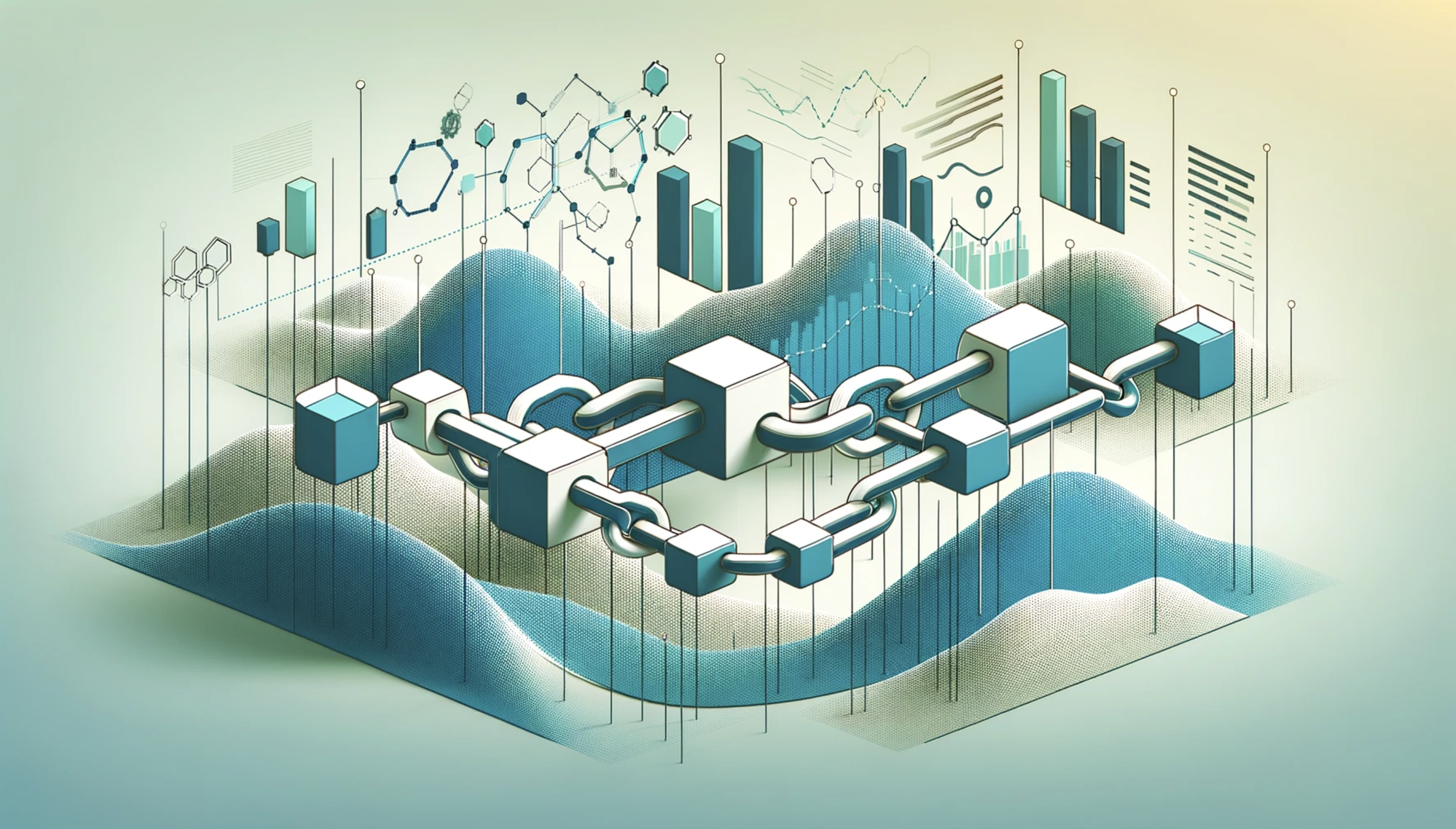
But why do we need to index blockchain data?
Blockchain networks contain vast amounts of information, and they continuously grow as additional blocks are added daily. What’s more, these networks lack native mechanisms and features for data retrieval. Consequently, without indexing blockchain data, finding specific information – like a particular transaction or account balance – would be like searching for a needle in a haystack.
So, how does blockchain data indexing work?
In short, blockchain data indexing comprises a series of steps, including the process of extracting relevant information from raw blockchain data, creating indexes, and providing an interface for users, dapps, and other platforms to interact with so they can seamlessly query the data they need.
All in all, blockchain data indexing is the process of gathering, organizing, and structuring data, making it searchable and significantly more accessible!
Challenges of Blockchain Data Indexing
When it comes to blockchain data indexing, Web3 developers typically have to deal with the following challenges:
- High Data Volume: Blockchain networks can be relatively substantial in size, and they continuously receive data from multiple sources, including decentralized exchanges (DEXs), Web3 games, and other dapps. And the sheer size of blockchain networks can make them challenging to filter and index.
- Lack of Query Languages: Unlike conventional databases that support languages like SQL, blockchain networks don’t have a standardized query language. This makes it difficult for indexers and other users to fetch the needed data.
- Decentralization: While decentralization of data provides loads of benefits – such as enhanced security, transparency, and protection against data tampering – it poses problems for indexing since information is spread across nodes and blocks.
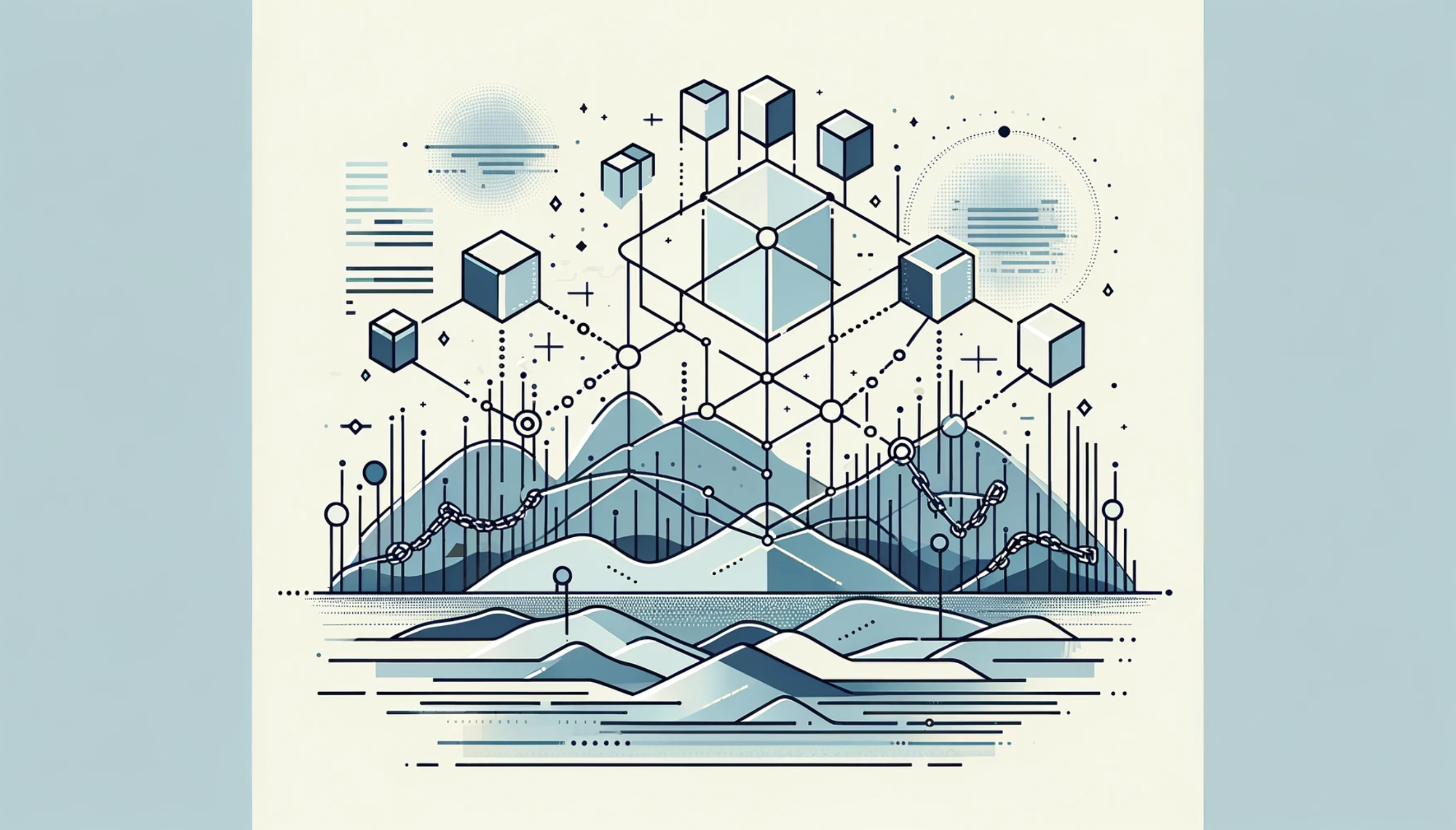
Due to these challenges, Web3 developers typically leverage so-called blockchain indexers. But what is a blockchain indexer? And how do they work?
What is a Blockchain Indexer?
Blockchain indexers are specialized tools – such as Etherscan, NFTScan, BscScan, etc. – that help you seamlessly search, query, visualize, and analyze data from a blockchain network. In essence, tools like these take care of the indexing process. And this means they organize, structure, and format blockchain data so you don’t have to. Consequently, by leveraging a blockchain indexer, you can effortlessly query the data you and your projects need without having to deal with any of the associated challenges!

Nevertheless, to better understand what a blockchain indexer is, let’s explore some prominent benefits of using these tools:
- Data Accessibility: These tools index blockchain data, making it easy for you to query specific information from a network. For instance, with a blockchain indexer, you can seamlessly fetch all transactions of a particular cryptocurrency wallet/address.
- Data Analytics: Since blockchain indexers allow you to fetch precisely the information you’re seeking, the data becomes a lot more digestible and straightforward to analyze.
- Query Performance: As a blockchain grows, it’s becoming increasingly time-consuming and resource-intensive to query data directly from the network. Thankfully, through a blockchain indexer, this task becomes significantly more manageable.
- Dapp Development: Dapps typically need fast and efficient access to particular blockchain data, and the easiest way to access the information your projects require is to use a blockchain indexer. Consequently, by leveraging tools like these, you can effortlessly streamline your dapp development endeavors.
- Multi-Chain Support: The best blockchain indexers are designed to support multiple networks, allowing you to query data across the biggest blockchains.
If you’d like to explore some prominent platforms, check out our full list of blockchain indexing tools on Moralis’ dapp store: Web3 Wiki!
Do I Need to Know How to Index Blockchain Data to Build Dapps?
Do I need to know how to index blockchain data to build dapps?
Well, the short answer to the above question is no!
As a Web3 developer, you don’t have to know how to index blockchain data when building dapps, as there are services that take care of this process for you. And a great example is the industry’s premier platform for Web3 development, Moralis.

Moralis is an industry-leading Web3 API provider doing all the heavy lifting in terms of indexing blockchain data. Consequently, when working with Moralis, you can seamlessly query multiple networks, including Ethereum, BSC, Polygon, etc., and build world-class Web3 projects without any of the hassles of manually indexing the blockchain yourself!
To learn more about the capabilities of Moralis, join us in the next section as we explore the ins and outs of this industry-leading platform and introduce the tools you need to build your own blockchain indexer or any other Web3 platform!
How to Build a Blockchain Indexer
Moralis is the industry’s premier Web3 API provider, allowing you to seamlessly query already indexed blockchain data with only single lines of code. What’s more, in our suite of development tools, you’ll find multiple APIs for various use cases. Some examples include the Blockchain API, Token API, Streams API, Wallet API, and many others. As such, it doesn’t matter if you want to build a DEX, NFT marketplace, blockchain indexer, or any other platform; Moralis has got you covered!
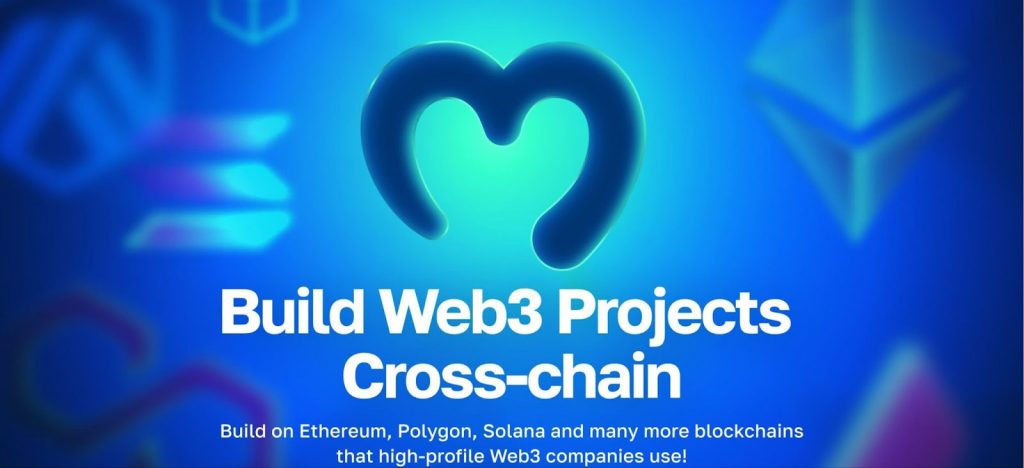
So, why should you leverage Moralis in your development endeavors?
To answer the question above, let’s briefly explore some benefits of Moralis!
- Top Performance: Moralis’ Web3 APIs offer top performance. It doesn’t matter if you want to measure by reliability, speed, or other metrics; Moralis continuously outperforms the competition.
- Unparalleled Scalability: All of Moralis’ APIs are built to scale. Consequently, you never have to worry about performance as your projects grow.
- Cross-Chain Compatability: Our APIs are cross-chain compatible, supporting blockchains like Ethereum, BSC, Polygon, Optimism, Gnosis, Arbitrum, and many more. As such, with Moralis, you can seamlessly query already indexed blockchain data from all the biggest blockchains.
Nevertheless, to highlight the power of Moralis further, let’s dive deeper into three prominent Web3 APIs you can use to build a blockchain indexer, crypto wallet, NFT marketplace, or any other Web3 platform!
Blockchain API
With Moralis’ Blockchain API, you can effortlessly unlock the power of raw and decoded blockchain data with precision and pace. This industry-leading tool allows you to seamlessly get basic blockchain information – including block data, smart contract events, logs, and much more – with only single lines of code!

To highlight the power of the Blockchain API, here’s an example of how easy it is to fetch block data with the getBlock() endpoint:
const response = await Moralis.EvmApi.block.getBlock({ "chain": "0x1", "blockNumberOrHash": "18541416" }); Wallet API
Moralis’ Wallet API is the ultimate tool if you’re looking to integrate Web3 wallet data and functionality into your projects. It offers extensive support for over 500 million addresses across all the most significant blockchains. This includes prominent networks Ethereum, BSC, Polygon, Avalanche, and many others!
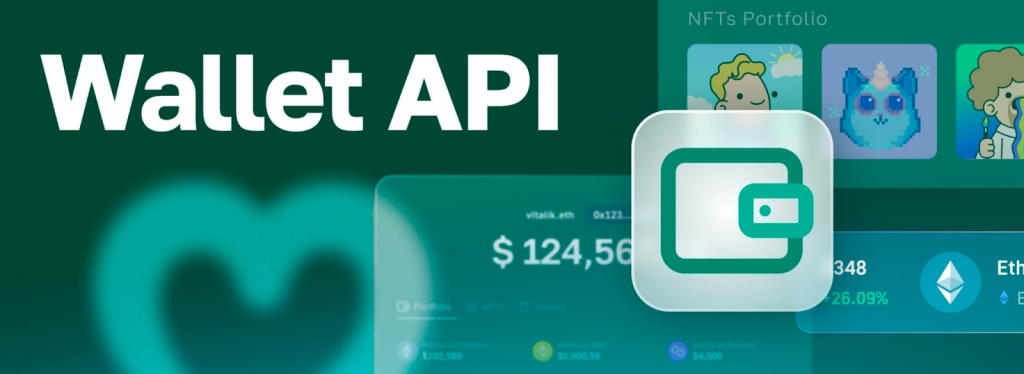
With only single API calls, you can use this industry-leading tool to effortlessly fetch the native balances, NFTs, transactions, etc., of any Web3 wallet. For instance, here’s an example of how you can query the native balance of an address using the getNativeBalance() endpoint:
const response = await Moralis.EvmApi.balance.getNativeBalance({ "chain": "0x1", "address": "0xDC24316b9AE028F1497c275EB9192a3Ea0f67022" }); Streams API
The Streams API is the ultimate tool for anyone who wants to get blockchain data in real time. With only a few lines of code, you can effortlessly set up your own streams to get updates sent directly to the backend of your projects via webhooks as soon as something important happens on-chain!
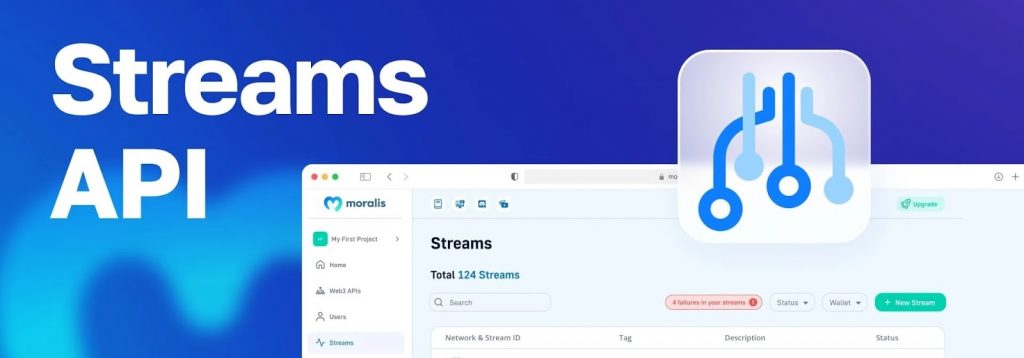
What’s more, the Streams API supports all types of events, smart contracts, Web3 wallets, etc. As such, with the Streams API, you can seamlessly set up Web3 alerts to keep your users up to speed!
So, how does the Streams API work?
Well, you can set up your own streams in three straightforward steps:
- Step 1: Configure a
streamobject by specifying the chains you want to monitor, what events you want to listen for, and a webhook destination:
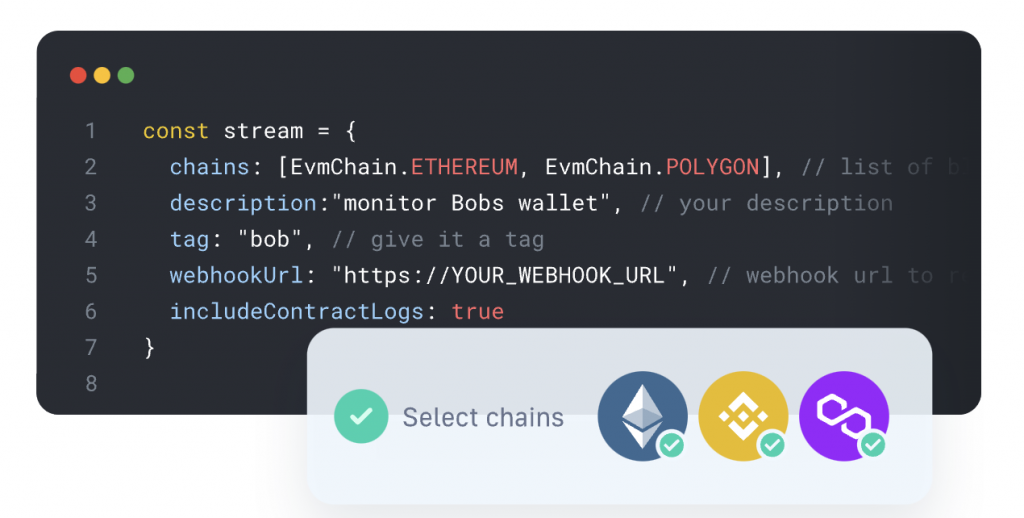
- Step 2: Set up your stream and get a test webhook in return:
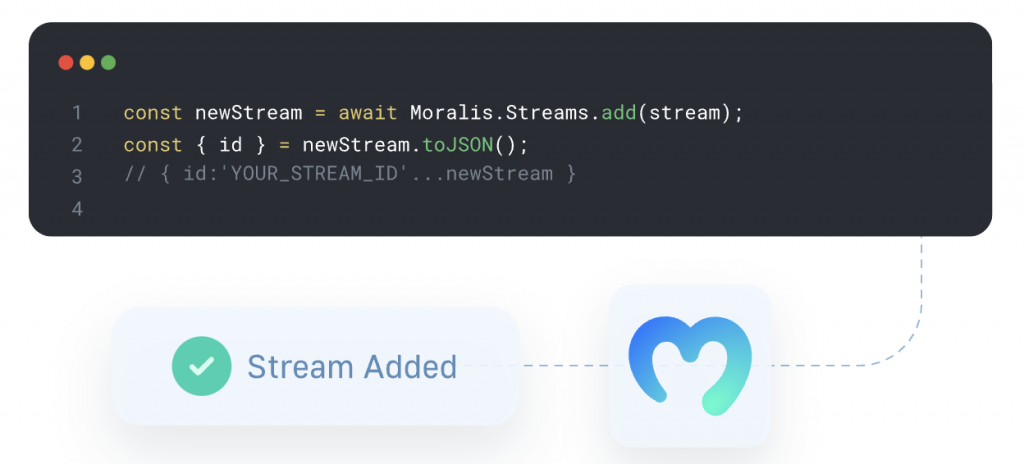
- Step 3: Add one or millions of addresses you wish to monitor to your stream:
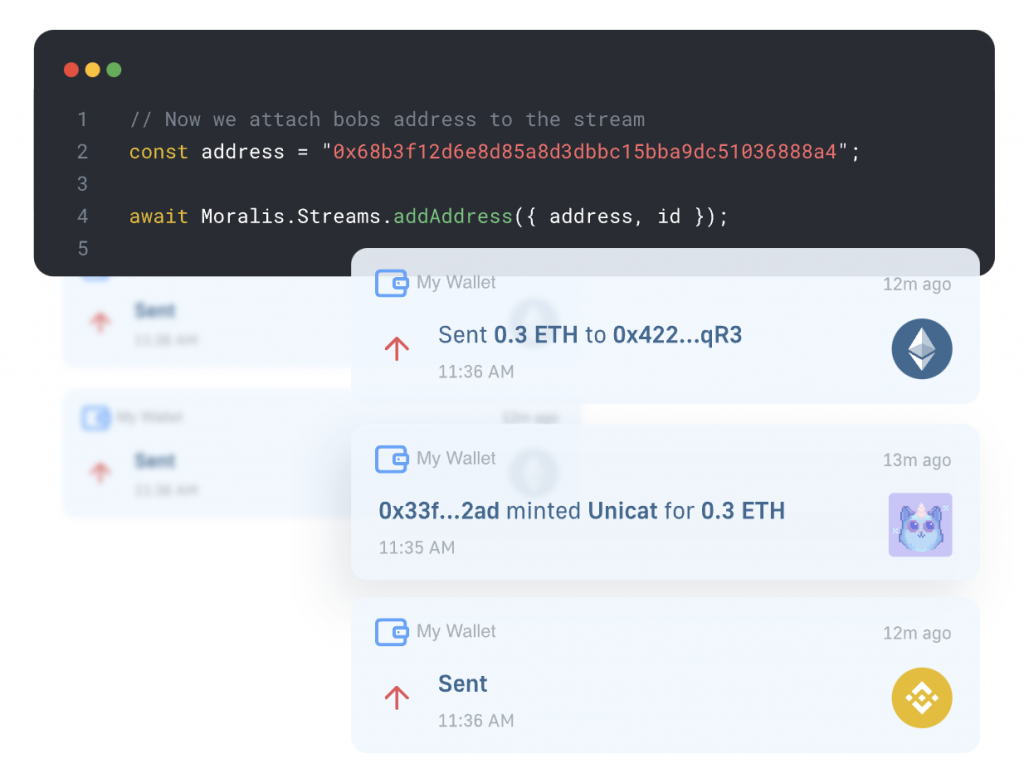
If you’d like to explore all our premier interfaces you can use to build a blockchain indexer, Web3 wallet, DEX, or any other platform, check them out on our official Web3 API page!
Summary: How to Index Blockchain Data & Build a Blockchain Indexer
We kickstarted this article by diving into the ins and outs of blockchain data indexing. In doing so, we learned that it’s the process of fetching, organizing, and formatting on-chain data. The goal of this is to improve the accessibility and searchability of the information stored on blockchain networks. This, in turn, streamlines data retrieval processes, making it easier for developers and dapps to track assets, explore transactions, etc
From there, we then explored some challenges associated with blockchain data indexing, where we discovered that the size of the networks, lack of standardized query languages, and the decentralized nature of blockchains can make it challenging to index data.
Next, we also covered the ins and outs of blockchain indexers, where we learned that they are platforms that index the blockchain for you. These platforms provide loads of benefits and make dapp development significantly more accessible.
Lastly, to top things off, we introduced you to Moralis’ suite of Web3 APIs. With tools like the Blockchain API, Wallet API, and Streams API, you can build a blockchain indexer platform or any other Web3 project without breaking a sweat!
If you liked this blockchain data indexing article, consider checking out more of our content here on the Web3 blog. For instance, read our most recent article exploring a full list of DEXs or learn how to list all the coins in an ETH address.
Also, if you’re serious about building your own Web3 projects, don’t forget to sign up with Moralis. You can create an account for free, and you’ll gain immediate access to all our industry-leading Web3 APIs. And with Moralis, you’ll be able to build your Web3 projects faster and more efficiently!
Read More: moralis.io

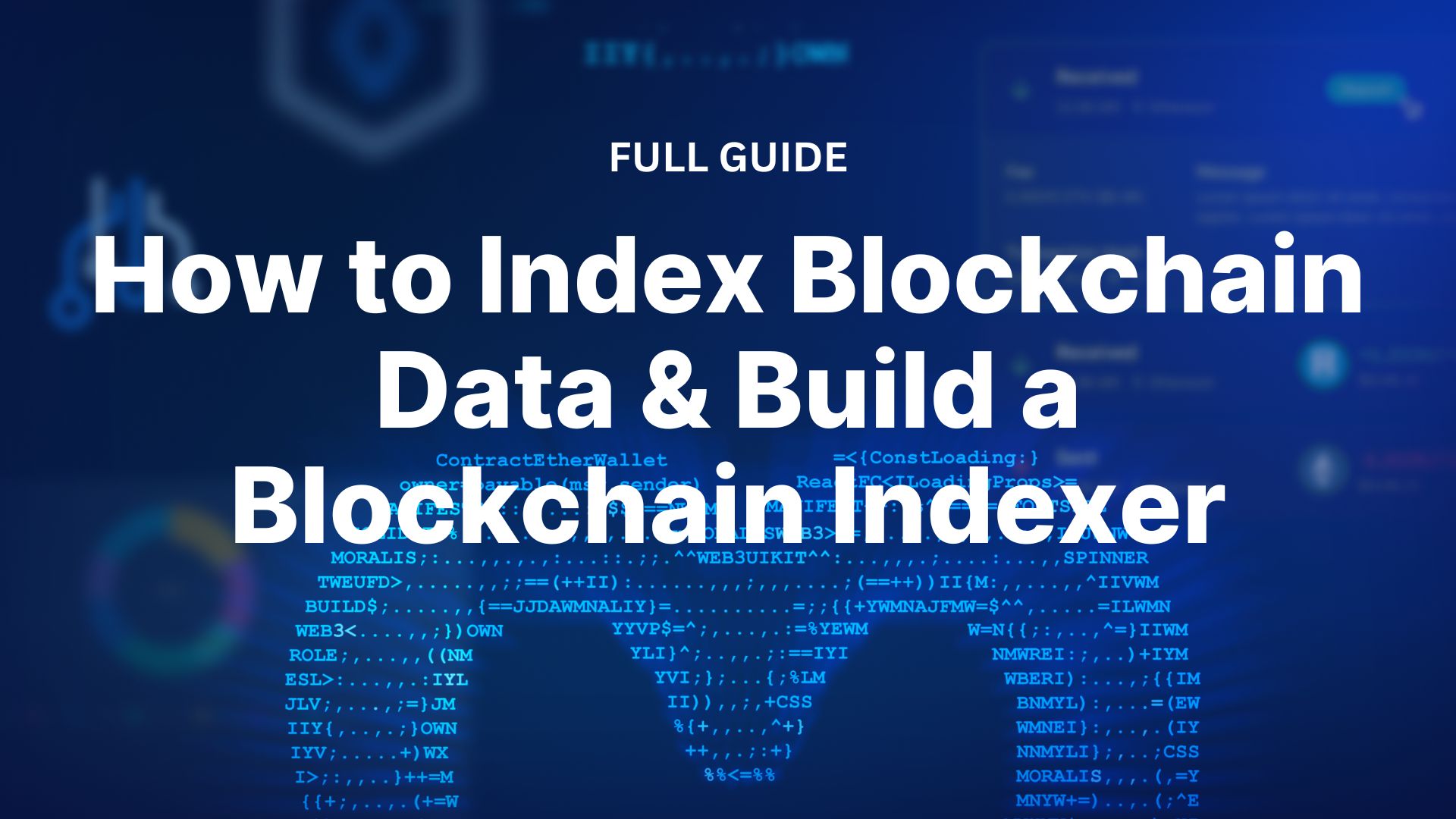







 Compound
Compound  Wormhole
Wormhole  Sun Token
Sun Token  Staked HYPE
Staked HYPE  Movement
Movement  Popcat
Popcat  Coinbase Wrapped Staked ETH
Coinbase Wrapped Staked ETH  Ether.fi Staked BTC
Ether.fi Staked BTC  Mog Coin
Mog Coin  Amp
Amp  Gnosis
Gnosis  Akash Network
Akash Network  Livepeer
Livepeer  Swell Ethereum
Swell Ethereum  Polygon Bridged WBTC (Polygon POS)
Polygon Bridged WBTC (Polygon POS)  Trust Wallet
Trust Wallet  JUST
JUST  Polygon
Polygon  Olympus
Olympus  Terra Luna Classic
Terra Luna Classic  Polygon PoS Bridged WETH (Polygon POS)
Polygon PoS Bridged WETH (Polygon POS)  Legacy Frax Dollar
Legacy Frax Dollar  Wrapped AVAX
Wrapped AVAX  Binance-Peg BUSD
Binance-Peg BUSD  Plume
Plume  Global Dollar
Global Dollar  Axelar
Axelar  Ripple USD
Ripple USD  MANTRA
MANTRA  SuperVerse
SuperVerse  Safe
Safe  Bybit Staked SOL
Bybit Staked SOL  Turbo
Turbo  1inch
1inch  Berachain
Berachain  Creditcoin
Creditcoin  Cheems Token
Cheems Token  cat in a dogs world
cat in a dogs world  Aave USDC (Sonic)
Aave USDC (Sonic)  Quorium
Quorium  BTSE Token
BTSE Token  Dash
Dash  aBTC
aBTC  Kusama
Kusama  cWBTC
cWBTC  Decred
Decred  ai16z
ai16z